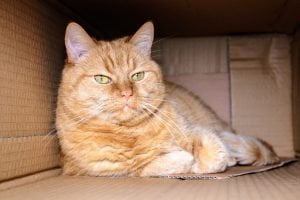 Your kitty has started urinating (or pooping) on the living room rug.
Your kitty has started urinating (or pooping) on the living room rug.
What can you do?
You went to the veterinarian. Examination and diagnostic testing was all normal. But clearly something is wrong.
What could it be?
Now’s a great time to look at the symptoms in detail. Put them into the context of the whole environment. And interpret them holistically.
Take A Look At Symptoms
The urine tests were clear, so there’s no indication of urinary infection (which is a rare cause for this symptom in cats anyway). Nothing that you’re aware of has recently changed. But your kitty disagrees.
You know that cats can be fierce hunters. But did you also know that they can be exquisitely sensitive?
In fact, the majority of “inappropriate elimination” (this is vet speak for the syndrome even though your kitty probably thinks that peeing on your good rug is totally appropriate) are due to some slight environmental change that your cat doesn’t like.
Try these 5 easy fixes
- Scoop the box after every elimination. Cats are fastidious creatures and many prefer not to use a soiled box. One clue is that these cats sometimes only dig in litter that’s been freshly added to the box.
- Change the type of litter you use. Litter preference (and aversion) is commonly seen so if you use a claylitter, try a sand type (clumping one). Choose an unscented litter and avoid litter deodorizers (Use Zero Odor spray to eliminate litter area or other odors).

- Wash the litter box thoroughly. Even better, get a new, bigger one. With no odor. Some cats will not use a box if they detect that the box has even a slight smell. In fact, some cats would prefer to urinate on the clean brown packing paper in the new cardboard box you just got from Amazon!
- Add a piece of carpet that sticks out from under the box. Cats can develop a surface preference. They seem to like the feel of specific textures under their feet when they urinate. These cats will pee in the box while having their front feet outside the box on the carpet.
- Move the box to a quiet, protected area. Your cat may be one of those with a location preference. Move the box to her preferred location to prompt her to use it again. Once she is doing so for a few days, you can slowly start moving it to a more convenient (for you) spot.

Making these simple changes can eliminate the problem by addressing the environmental trigger.
Even better is to address the underlying internal change that may have suddenly made you cat over-sensitive to her environment.
Join us as a Holistic Actions! Academy member to have our faculty help you help your pets.
